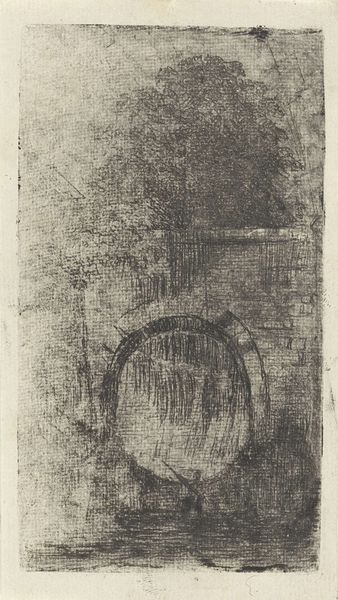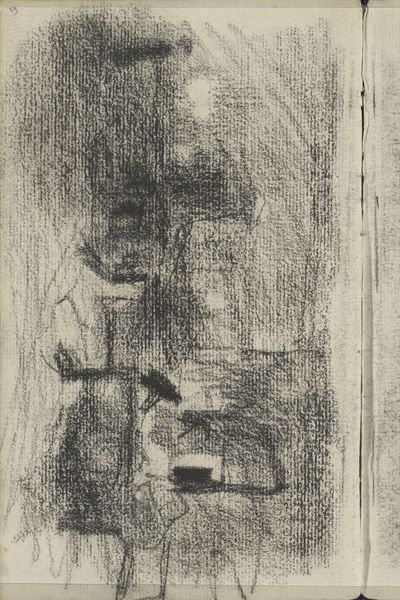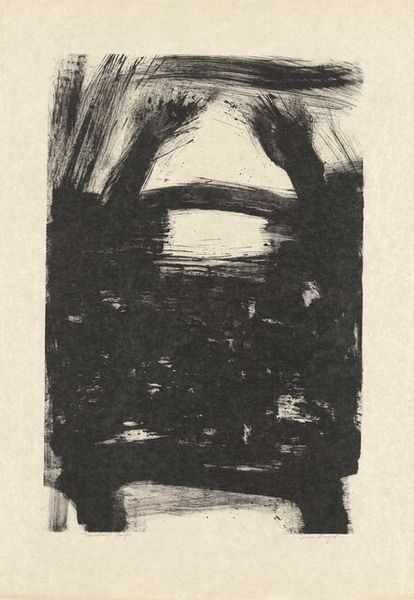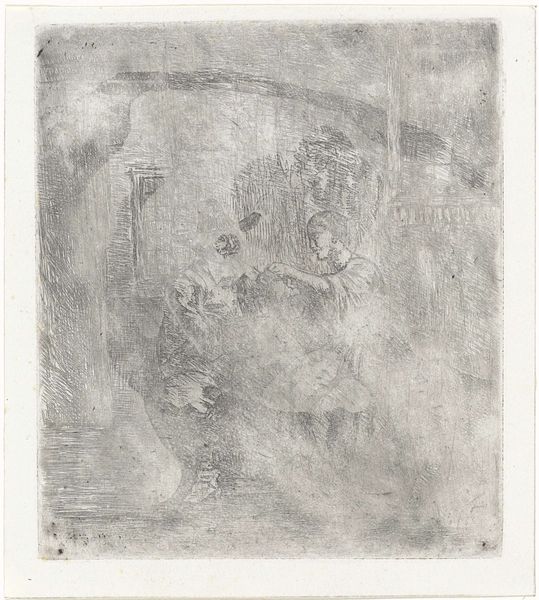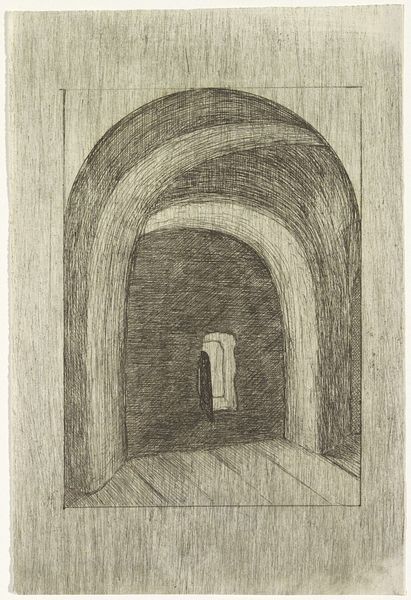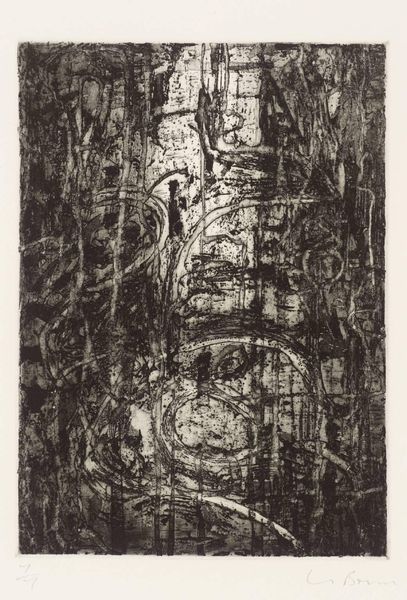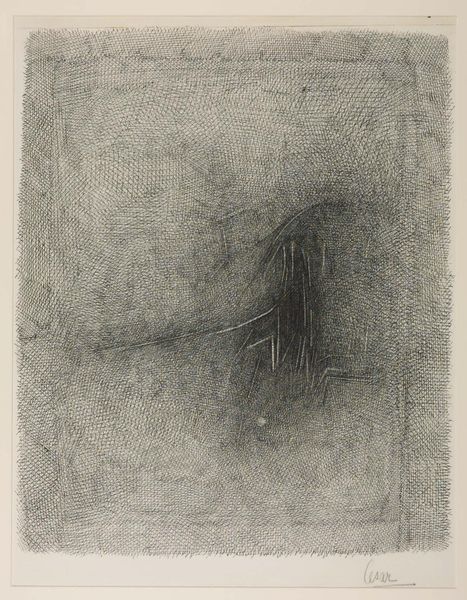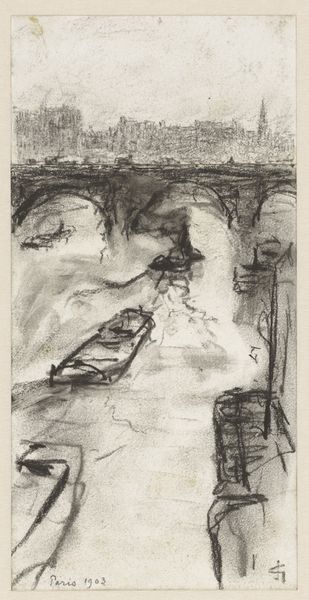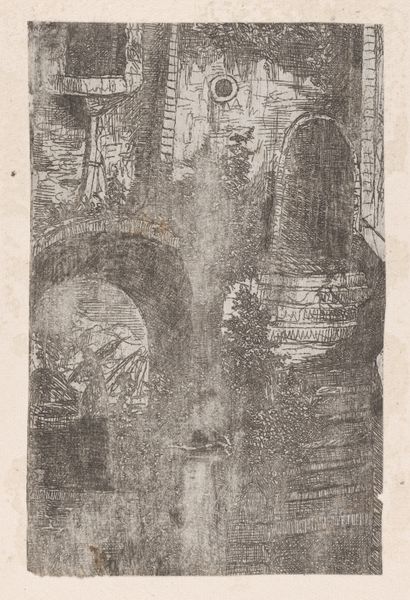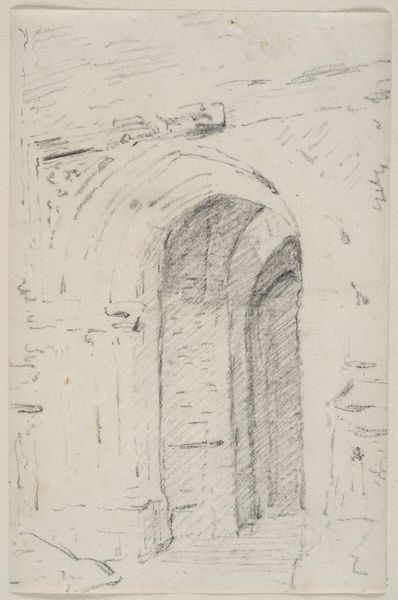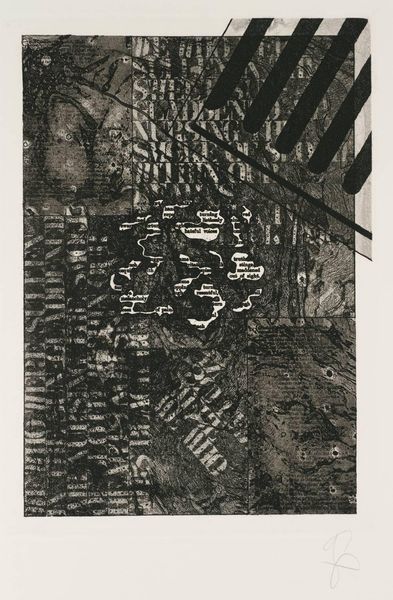
drawing, print, etching
#
drawing
# print
#
etching
#
landscape
#
form
#
geometric
#
line
#
cityscape
#
realism
Dimensions: height 163 mm, width 115 mm
Copyright: Rijks Museum: Open Domain
Curator: This delicate etching, titled "Brugboog", comes to us from the hand of Alexander Schaepkens. We estimate it was created sometime between 1830 and 1899. What’s your immediate take on this cityscape, our Iconographer? Editor: It feels…unfinished, but not in a negative way. The lines are so light, almost hesitant. I find that creates a real sense of stillness, a quiet moment captured amidst potentially bustling city life. Curator: I agree completely. It's quite interesting how the bridge arch dominates the composition. Normally, one expects a bridge to connect, to offer passage, but here, it's almost a barrier, a frame around… well, around more bridge, I suppose. It gives me the impression of looking into the subconscious, doesn’t it? This layering effect created by these recurring symbols. Editor: Absolutely! Arches, throughout art history, act as a potent symbol, almost a gate to knowledge, passage between the mundane and the spiritual. What is behind that arch? Where does the symbolism guide our unconscious self? In this composition the perspective hints at another gateway…an infinity. I think this simple scene invites us to gaze not just *at* something, but *through* something into…possibilities. Curator: And the tree growing atop the arch? It’s almost like nature reclaiming the architectural space or maybe reminding us that there is still nature existing within these constructed city spaces. This blend is an element that pulls me in as well. Editor: Trees… well, in art they tend to carry such weight, don't they? From the Tree of Life, to symbols of knowledge and growth. To have it bursting from the arch—its roots digging into the very structure itself—I perceive nature as both a source of strength and a force that patiently and gradually reclaims human designs, which can serve as a great metaphorical significance for anyone. Curator: Indeed, it certainly softens the geometric lines of the bridge with a gentle hand, just as the print's subdued palette invites gentle reflection, a welcome breather amidst the city clamor. What an intriguing work. Editor: Definitely! Schaepkens has offered us a layered piece ripe with cultural memory, a little visual meditation on the ever-shifting, and timeless relationship between nature, humanity and architectural expression.
Comments
No comments
Be the first to comment and join the conversation on the ultimate creative platform.

